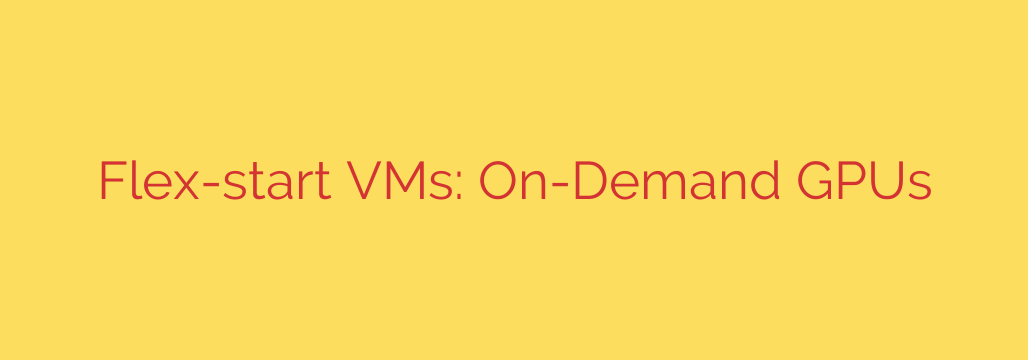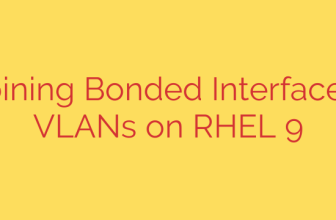
On-Demand GPUs: The Flexible, Cost-Effective Solution for AI and ML Workloads
The demand for high-performance computing has skyrocketed, driven by advancements in artificial intelligence, machine learning, and complex data analysis. However, accessing the powerful Graphics Processing Units (GPUs) required for these tasks has traditionally been a major roadblock for developers, researchers, and businesses. The challenges are clear: high upfront hardware costs, rigid long-term contracts with cloud providers, and slow deployment times.
A more agile and efficient solution is emerging in the form of flexible, on-demand GPU virtual machines. This innovative approach is changing the game by providing powerful computing resources exactly when you need them, without the traditional overhead and commitment.
The Problem with Traditional GPU Access
For years, anyone needing serious GPU power faced a difficult choice. You could either invest tens of thousands of dollars in physical hardware that would quickly become outdated or lock into expensive, reserved instances with major cloud providers. Both options present significant drawbacks:
- High Capital Expenditure: Purchasing enterprise-grade GPUs is prohibitively expensive for startups, individual researchers, and even many established companies.
- Idle Costs: Reserved cloud instances often charge you even when the GPU is not actively processing a task, leading to wasted budget.
- Lack of Flexibility: Long-term contracts penalize projects that are short-term, experimental, or have fluctuating resource needs.
This is where a new generation of flexible virtual machines comes in, designed specifically to solve these problems by offering a truly on-demand service.
The Power of a Flexible, On-Demand Model
Flexible GPU virtual machines operate on a simple yet powerful principle: provide instant access to high-performance computing with a transparent, pay-as-you-go model. This approach delivers several key advantages.
- True Pay-Per-Second Billing: The most significant benefit is the cost structure. Instead of being billed for an entire hour, users are charged only for the exact seconds the virtual machine is running. This means you can spin up a powerful GPU for a 10-minute task and pay for just those 10 minutes, drastically reducing costs for intermittent workloads.
- Rapid, Near-Instant Deployment: Time is a critical resource. With flexible VMs, you can go from idea to execution in minutes, not hours. These machines are designed to boot quickly, allowing developers to start training models, running simulations, or rendering scenes without frustrating delays.
- No Upfront Commitments or Contracts: This model provides ultimate freedom. You can use a top-of-the-line GPU for a single project and then shut it down with no lingering financial obligations. This is ideal for experimentation, short-term projects, and businesses with unpredictable computing demands.
Who Benefits Most from On-Demand GPUs?
This flexible approach to cloud computing is not a one-size-fits-all solution; it provides targeted benefits for a wide range of professionals.
- AI and Machine Learning Developers: Quickly prototype and train models on powerful hardware like the NVIDIA A100 or H100 without committing to a long-term instance. Pay only for active training time.
- Data Scientists and Researchers: Run complex simulations and data analyses on demand. Accessing massive computational power for short bursts is now economically viable.
- Startups and Small Businesses: Compete with larger corporations by leveraging enterprise-grade hardware without the enterprise-level budget. This democratizes access to high-performance computing.
- Creative Professionals: Artists and designers can spin up powerful GPU instances for 3D rendering, video editing, and visual effects, paying only for the processing time and avoiding workstation bottlenecks.
Security and Efficiency Best Practices
To make the most of on-demand GPU resources, it’s crucial to follow best practices for both cost management and security.
- Prepare Your Workflow in Advance: To minimize costs, have your code, datasets, and environment configurations ready before you launch the GPU instance. The clock starts ticking the moment the VM is active, so do as much prep work as possible on a less expensive machine.
- Choose the Right GPU for the Job: Don’t overpay for power you don’t need. A project for inference might not require the same top-tier GPU as a project for training a massive language model. Assess your requirements and select the most cost-effective option.
- Implement Robust Security Protocols: Treat your on-demand VM with the same security diligence as any other server. Always use SSH keys instead of passwords for access, configure firewalls to allow traffic only from trusted IP addresses, and ensure your data is encrypted both in transit and at rest.
- Automate and Monitor: Use scripts to automate the startup and shutdown of your instances. This ensures you never accidentally leave a costly GPU running overnight. Set up billing alerts to stay informed about your spending and avoid unexpected charges.
By combining powerful, on-demand hardware with smart, efficient practices, individuals and organizations can unlock new possibilities in research and development, all while maintaining complete control over their budgets and timelines. The future of high-performance computing is not about ownership—it’s about immediate, flexible access.
Source: https://cloud.google.com/blog/products/compute/introducing-flex-start-vms-for-the-compute-engine-instance-api/








